don't wanna spam my main but wanna compile these somewhere
Don't wanna be here? Send us removal request.
Text
How to Plot a Complex Novel in One Day

Now first, I have to say, that the plot you’re able to come up with in one day is not going to be without its flaws, but coming up with it all at once, the entire story unfolds right in front of you and makes you want to keep going with it. So, where to begin?
What is your premise and basic plot? Pick your plot. I recommend just pulling one from this list. No plots are “original” so making yours interesting and complicated will easily distract from that fact, that and interesting characters. Characters will be something for you to work on another day, because this is plotting day. You’ll want the main plot to be fairly straight forward, because a confusing main plot will doom you if you want subplots.
Decide who the characters will be. They don’t have to have names at this point. You don’t even need to know who they are other than why they have to be in the story. The more characters there are the more complicated the plot will be. If you intend to have more than one subplot, then you’ll want more characters. Multiple interconnected subplots will give the illusion that the story is very complicated and will give the reader a lot of different things to look at at all times. It also gives you the chance to develop many side characters. The plot I worked out yesterday had 13 characters, all were necessary. Decide their “roles” don’t bother with much else. This seems shallow, but this is plot. Plot is shallow.
Now, decide what drives each character. Why specifically are they in this story? You can make this up. You don’t even know these characters yet. Just so long as everyone has their own motivations, you’re in the clear.
What aren’t these characters giving away right off the bat? Give them a secret! It doesn’t have to be something that they are actively lying about or trying to hide, just find something that perhaps ties them into the plot or subplot. This is a moment to dig into subplot. This does not need to be at all connected to their drive to be present in the story. Decide who is in love with who, what did this person do in the 70’s that’s coming back to bite them today, and what continues to haunt what-his-face to this very day. This is where you start to see the characters take shape. Don’t worry much about who they are or what they look like, just focus on what they’re doing to the story.
What is going to change these characters? Now this will take some thinking. Everyone wants at least a few of the characters to come out changed by the end of the story, so think, how will they be different as a result of the plot/subplot? It might not be plot that changes them, but if you have a lot of characters, a few changes that are worked into the bones of the plot might help you.
Now list out the major events of the novel with subplot in chronological order. This will be your timeline. Especially list the historical things that you want to exist in backstory. List everything you can think of. Think about where the story is going. At this point, you likely haven’t focused too much on the main plot, yeah, it’s there, but now really focus on the rising actions, how this main plot builds its conflict, then the climactic moment. Make sure you get all of that in there. This might take a few hours.
Decide where to start writing. This part will take a LOT of thinking. It’s hard! But now that you’ve got the timeline, pick an interesting point to begin at. Something with action. Something relevant. Preferably not at the beginning of your timeline - you want to have huge reveals later on where these important things that happened prior are exposed. This is the point where you think about what information should come out when. This will be a revision of your last list, except instead of being chronological, it exists to build tension.
Once you’ve gotten the second list done, you’ve got a plot. Does it need work? Probably. But with that said, at this point you probably have no idea who half your characters are. Save that for tomorrow, that too will be a lot of work.
Disclaimer for this post.
32K notes
·
View notes
Photo


Character template | 14
wow i’m finally back with another template! pretty standard, however more text based than pictures. both versions are in the same psd, you can use both or only one, whatever works for you! edit as much as you like.
please like/reblog if you use!
let me know if you have any questions and I’ll try to help as best as I can.
download
2K notes
·
View notes
Text
Ref Recs for Whump Writers
Violence: A Writer’s Guide: This is not about writing technique. It is an introduction to the world of violence. To the parts that people don’t understand. The parts that books and movies get wrong. Not just the mechanics, but how people who live in a violent world think and feel about what they do and what they see done.
Hurting Your Characters: HURTING YOUR CHARACTERS discusses the immediate effect of trauma on the body, its physiologic response, including the types of nerve fibers and the sensations they convey, and how injuries feel to the character. This book also presents a simplified overview of the expected recovery times for the injuries discussed in young, otherwise healthy individuals.
Body Trauma: A writer’s guide to wounds and injuries. Body Trauma explains what happens to body organs and bones maimed by accident or intent and the small window of opportunity for emergency treatment. Research what happens in a hospital operating room and the personnel who initiate treatment. Use these facts to bring added realism to your stories and novels.
10 B.S. Medical Tropes that Need to Die TODAY…and What to Do Instead: Written by a paramedic and writer with a decade of experience, 10 BS Medical Tropes covers exactly that: clichéd and inaccurate tropes that not only ruin books, they have the potential to hurt real people in the real world.
Maim Your Characters: How Injuries Work in Fiction: Increase Realism. Raise the Stakes. Tell Better Stories. Maim Your Characters is the definitive guide to using wounds and injuries to their greatest effect in your story. Learn not only the six critical parts of an injury plot, but more importantly, how to make sure that the injury you’re inflicting matters.
Blood on the Page: This handy resource is a must-have guide for writers whose characters live on the edge of danger. If you like easy-to-follow tools, expert opinions from someone with firsthand knowledge, and you don’t mind a bit of fictional bodily harm, then you’ll love Samantha Keel’s invaluable handbook
28K notes
·
View notes
Text
List of 120 unique fantasy jobs to give to your fantasy characters. Writers save this!
1. Spellscribe: Weaves magic into ink, creating enchanted scrolls and spellbooks.
2. Dreamweaver: Shapes dreams, ensuring a peaceful slumber for all.
3. Star Cartographer: Maps constellations and celestial paths.
4. Potion Alchemist: Brews elixirs, love potions, and invisibility brews.
5. Whispering Wind Courier: Carries messages on ethereal zephyrs.
6. Crystal Harmonist: Plays melodies on gemstone xylophones.
7. Arcane Librarian: Guards forbidden tomes and ancient grimoires.
8. Stormcaller: Commands lightning and tempests.
9. Shadow Weaver: Manipulates shadows for stealth or illusion.
10. Fey Ambassador: Bridges the gap between humans and fae.
11. Time Tinkerer: Repairs temporal rifts and broken clocks.
12. Soul Gardener: Tends to souls in the afterlife.
13. Dragon Whisperer: Communicates with fire-breathing beasts.
14. Labyrinth Architect: Designs mazes with shifting walls.
15. Aetheronaut: Pilots airships through the skies.
16. Cauldron Chef: Cooks magical stews and enchanted pastries.
17. Goblin Negotiator: Haggles with mischievous goblins over stolen treasures.
18. Wisp Shepherd: Herds glowing wisps across moonlit meadows.
19. Constellation Painter: Dips brushes in stardust to create cosmic art.
20. Swordsmith of Destiny: Forges blades with prophetic properties.
21. Oracle of Riddles: Answers questions through cryptic puzzles.
22. Moss Whisperer: Encourages moss-covered stones to share their secrets.
23. Harvest Moon Dancer: Leads celestial dances during lunar eclipses.
24. Chimera Veterinarian: Cares for mythical hybrid creatures.
25. Lore Bard: Sings epic sagas of forgotten heroes.
26. Stardust Prospector: Mines cosmic minerals from fallen meteors.
27. Mistwalker: Guides lost souls through foggy moors.
28. Enchanted Cobbler: Crafts shoes that grant extraordinary abilities.
29. Celestial Clockmaker: Constructs timepieces powered by starlight.
30. Gargoyle Sculptor: Carves stone guardians with hidden sentience.
31. Wandmaker: Whittles wands from ancient tree branches.
32. Mermaid Translator: Deciphers underwater songs and sea whispers.
33. Nightshade Apothecary: Harvests moonflowers and midnight herbs.
34. Serpent Charmer: Mesmerizes serpents with haunting melodies.
35. Skyship Navigator: Charts courses through floating islands.
36. Frostfire Sculptor: Shapes ice and flame into ephemeral statues.
37. Cursed Cursebreaker: Lifts hexes and breaks enchantments.
38. Goblin Archaeologist: Digs up lost goblin civilizations.
39. Sylph Perfumer: Captures the essence of zephyrs in fragrances.
40. Mystic Cartographer: Maps hidden ley lines and magical nexuses.
41. Moonstone Miner: Extracts shards of moonlight from caverns.
42. Gryphon Trainer: Raises and trains majestic gryphons.
43. Candlemaker of Lost Hopes: Creates candles that reveal forgotten memories.
44. Starwhisper Cartographer: Maps cosmic phenomena—comets' paths, shooting star trails, and celestial alignments.
45. Gloomsmith: Crafts melancholic artifacts—music boxes that play haunting melodies, mirrors that reflect lost loves, and inkwells that pen tear-stained poetry.
46. Siren Songstress: Sings enchanting melodies by moonlit shores, luring sailors toward rocky fates or guiding them safely through treacherous waters.
47. Astral Weaver: Spins threads from stardust, creating cloaks that grant glimpses of alternate realities or tapestries that depict forgotten legends.
48. Cryptobotanist: Studies otherworldly flora—glow-in-the-dark mushrooms, singing vines, and moonblossoms that bloom only during eclipses.
49. Soothsayer: Reads the future in tea leaves, cloud formations, or the patterns of fireflies. Their predictions shape destinies.
50. Stormglass Sculptor: Carves intricate sculptures from stormglass—frozen lightning, raindrop chandeliers, and thunderstorm dioramas.
51. Wispkeeper: Tends to wisps—tiny, glowing spirits that flit through forests. They bottle wisp-light for healing potions.
52. Eidolon Portraitist: Paints portraits of ghosts, capturing their essence before they fade into oblivion.
53. Moss Oracle: Listens to moss-covered stones, deciphering their murmurs to reveal lost histories.
54. Labyrinth Minstrel: Wanders through shifting mazes, singing songs that guide lost travelers to safety.
55. Frostbite Healer: Extracts shards of moonlight from caverns.
56. Gryphon Trainer: Raises and trains majestic gryphons.
57. Candlemaker of Lost Hopes: Creates candles that reveal forgotten memories.
58. Starwhisper Cartographer: Maps cosmic phenomena—comets’ paths, shooting star trails, and celestial alignments. Their charts guide explorers to hidden constellations.
59. Gloomsmith: Crafts melancholic artifacts—music boxes that play haunting melodies, mirrors that reflect lost loves, and inkwells that pen tear-stained poetry.
60. Siren Songstress: Sings enchanting melodies by moonlit shores, luring sailors toward rocky fates or guiding them safely through treacherous waters.
61. Astral Weaver: Spins threads from stardust, creating cloaks that grant glimpses of alternate realities or tapestries that depict forgotten legends.
62. Cryptobotanist: Studies otherworldly flora—glow-in-the-dark mushrooms, singing vines, and moonblossoms that bloom only during eclipses.
63. Soothsayer: Reads the future in tea leaves, cloud formations, or the patterns of fireflies. Their predictions shape destinies.
64. Stormglass Sculptor: Carves intricate sculptures from stormglass—frozen lightning, raindrop chandeliers, and thunderstorm dioramas.
65. Wispkeeper: Tends to wisps—tiny, glowing spirits that flit through forests. They bottle wisp-light for healing potions.
66. Eidolon Portraitist: Paints portraits of ghosts, capturing their essence before they fade into oblivion.
67. Moss Oracle: Listens to moss-covered stones, deciphering their murmurs to reveal lost histories.
68. Labyrinth Minstrel: Wanders through shifting mazes, singing songs that guide lost travelers to safety.
69. Frostbite Healer: Treats frostbitten extremities with salves made from frost sprites’ tears.
70. Chalice Enchanter: Carves runes into crystal goblets, infusing each sip with memories or emotions.
71. Goblin Archaeologist: Digs up lost goblin civilizations, unearthing rusty gadgets and cryptic hieroglyphs.
72. Sylph Perfumer: Captures the essence of zephyrs in fragrances—dawn mist, thunderstorm ozone, and moonrise musk.
73. Mystic Cartographer: Maps hidden ley lines and magical nexuses. Their charts reveal portals and ley-gates.
74. Moonstone Miner: Extracts shards of moonlight from caverns, which can be used for enchantments or as lantern fuel.
75. Gryphon Trainer: Raises and trains majestic gryphons for aerial patrols or epic quests.
76. Candlemaker of Whispers: Crafts candles that flicker with spectral flames, allowing communication with the departed.
77. Stardust Prospector: Mines cosmic minerals from fallen meteors—star iron, comet opals, and nebula gems.
78. Golem Animator: Breathes life into clay and stone constructs, imbuing them with purpose.
79. Wraith Whisperer: Communicates with restless spirits, negotiating unfinished business.
80. Celestial Navigator: Guides ships by star charts, steering vessels through astral currents.
81. Chaos Theorist: Predicts chaotic events using butterfly-wing equations, preventing or exploiting chaos.
82. Fairy Ring Dancer: Enters mystical circles to converse with fairies, striking bargains or seeking wisdom.
83. Banshee Lullaby Singer: Soothes grieving souls with haunting songs, easing their passage to the beyond.
84. Goblin Diplomat: Negotiates peace treaties between realms, balancing goblin mischief and human interests.
85. Veilwalker: Steps between dimensions using shimmering veils, exploring parallel worlds.
86. Moonshard Weaver: Threads moonstone shards into cloaks that grant moonwalking abilities.
87. Gryphon Whisperer: Communicates with gryphons through empathic bonds.
88. Cursed Curator: Collects cursed artifacts, safeguarding them in hidden vaults.
89. Sphinx Riddler: Poses enigmas to travelers seeking wisdom, granting answers in exchange for riddles.
90. Bard of Echoes: Sings songs that echo through time, preserving forgotten tales.
91. Goblin Inventor: Constructs whimsical gadgets—umbrellas that predict rain, shoes that dance, and hats that translate squirrel chatter.
92. Serpent Astronomer: Studies cosmic serpents—constellations that writhe across the sky.
93. Wisp Choreographer: Stages ethereal dances in moonlit glades, captivating forest creatures.
94. Lorekeeper of Lost Languages: Deciphers ancient scripts, unlocking forbidden knowledge.
95. Mistral Cartographer: Maps winds—trade winds, storm fronts, and zephyr currents.
96. Harbinger of Eclipses: Predicts solar and lunar eclipses, foretelling cosmic shifts.
97. Grimoire Illuminator: Adds luminescent runes to spellbooks, making incantations glow.
98. Nymph Whisperer: Listens to water nymphs’ laughter, translating it into healing melodies.
99. Celestial Harvester: Gathers stardust for celestial events—meteor showers, comet arrivals.
100. Goblin Mechanomancer: Constructs clockwork creatures—mechanical squirrels, steam-powered beetles.
101. Sylph Skyweaver: Spins cloud silk into airy garments that grant flight.
102. Oracle of Shifting Sands: Reads desert dunes, predicting sandstorms and mirages.
103. Moonmoth Keeper: Tends to moonmoths—luminous insects that guide lost travelers.
104. Gryphon Herald: Announces royal decrees from the backs of majestic gryphons.
105. Cauldron Seer: Gazes into bubbling cauldrons, glimpsing past, present, and future.
106. Whisperwood Arborist: Nurtures ancient trees that whisper forgotten secrets.
107. Stardust Cartographer: Maps cosmic phenomena—supernovae, black holes, and quasars.
108. Goblin Clockmaker: Constructs timepieces with peculiar quirks—watches that run backward, hourglasses that pause.
109. Sphinx Scholar: Studies riddles, deciphering their hidden meanings.
110. Wisp Guardian: Protects sacred wisps from curious wanderers.
111.Labyrinth Keeper: Guards labyrinth entrances, ensuring only worthy seekers enter.
112. Frostfire Forger: Crafts weapons that blaze with icy flames.
113. Goblin Meteorologist: Predicts weather using enchanted barometers and cloud crystals.
114. Sylph Windwhisperer: Converses with gusts, learning their secrets.
115. Dreamcatcher Artisan: Weaves dreamcatchers that trap nightmares and release sweet dreams.
116. Celestial Herald: Announces cosmic events—comets, eclipses, and planetary alignments.
117. Grimoire Binder: Assembles spellbooks, binding them with dragonhide and phoenix feathers.
118. Nymph Songkeeper: Records water nymphs’ melodies, preserving them in enchanted shells.
119. Goblin Tinkerer: Repairs broken gadgets—flying broomsticks, talking teapots.
120. Starforged Smith: Hammers star fragments into celestial armor and swords.
🎉 WOOHOO, YOU MADE IT TO THE END! 🎉
It looks like you're committed to building that FANTASY WORLD of yours, and you're just in luck! ✨ From August 5 to 10, I'm offering a PRECIOUS DEAL you can't miss: 75% OFFon an all-in-one worldbuilding worksheet, guide, planner, and organizer! PLUS, you'll get FREE FANTASY ILLUSTRATIONS to spark your creativity! 🌟
GRAB THIS CHANCE—it's SUPER CHEAP and a ton of fun, trust me! I'm using it, and it HEALS MY INNER CHILD. You'll never be stuck in worldbuilding again, and you'll finally bring your world to life in real-time, SPEEDING UP your process from writing to publishing! 🚀
DON'T MISS OUT on this fantastic opportunity! 💥
Follow the link and see where it gets you! Watch the yt video and also see what it offers
youtube

5K notes
·
View notes
Text
“Show, Don’t Tell”…But This Time Someone Explains It
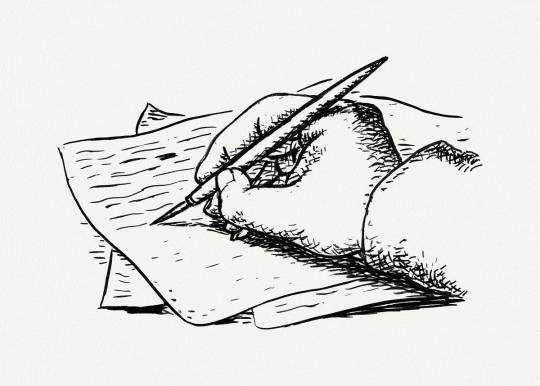
If you’ve ever been on the hunt for writing advice, you've definitely seen the phrase “Show, Don’t Tell.”
Writeblr coughs up these three words on the daily; it’s often considered the “Golden Rule” of writing. However, many posts don't provide an in-depth explanation about what this "Golden Rule" means (This is most likely to save time, and under the assumption that viewers are already informed).
More dangerously, some posts fail to explain that “Show, Don’t Tell” occasionally doesn’t apply in certain contexts, toeing a dangerous line by issuing a blanket statement to every writing situation.
The thing to take away from this is: “Show, Don’t Tell” is an essential tool for more immersive writing, but don't feel like a bad writer if you can’t make it work in every scenario (or if you can’t get the hang of it!)
1. What Does "Show, Don't Tell" Even Mean?

“Show, Don’t Tell” is a writing technique in which the narrative or a character’s feelings are related through sensory details rather than exposition. Instead of telling the reader what is happening, the reader infers what is happening due to the clues they’ve been shown.
EXAMPLE 1:
Telling: The room was very cold. Showing: She shivered as she stepped into the room, her breath steaming in the air.
EXAMPLE 2:
Telling: He was furious. Showing: He grabbed the nearest book and hurled it against the wall, his teeth bared and his eyes blazing.
EXAMPLE 3 ("SHOW, DON'T TELL" DOESN'T HAVE TO MEAN "WRITE A LOT MORE")
Telling: The room hadn't been lived in for a very long time. Showing: She shoved the door open with a spray of dust.
Although the “showing” sentences don’t explicitly state how the characters felt, you as the reader use context clues to form an interpretation; it provides information in an indirect way, rather than a direct one.
Because of this, “Show, Don’t Tell” is an incredibly immersive way to write; readers formulate conclusions alongside the characters, as if they were experiencing the story for themselves instead of spectating.
As you have probably guessed, “showing” can require a lot more words (as well as patience and effort). It’s a skill that has to be practiced and improved, so don’t feel discouraged if you have trouble getting it on the first try!
2. How Do I Use “Show, Don’t Tell” ?
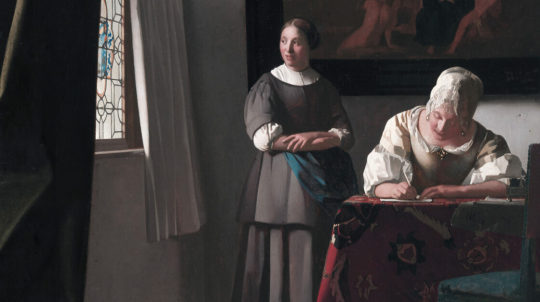
There are no foolproof parameters about where you “show” and not “tell" or vice versa; it’s more of a writing habit that you develop rather than something that you selectively decide to employ.
In actuality, most stories are a blend of both showing and telling, and more experienced writers instinctively switch between one and another to cater to their narrative needs. You need to find a good balance of both in order to create a narrative that is both immersive and engaging.
i. Help When Your Writing Feels Bare-Bones/Soulless/Boring
Your writing is just not what you’ve pictured in your head, no matter how much you do it over. Conversations are stilted. The characters are flat. The sentences don’t flow as well as they do in the books you've read. What’s missing?
It’s possibly because you’ve been “telling” your audience everything and not “showing”! If a reader's mind is not exercised (i.e. they're being "spoon-fed" all of the details), your writing may feel boring or uninspired!
Instead of saying that a room was old and dingy, maybe describe the peeling wallpaper. The cobwebs in the corners. The smell of dust and old mothballs. Write down what you see in your mind's eye, and allow your audience to formulate their own interpretations from that. (Scroll for a more in-depth explanation on HOW to develop this skill!)
ii. Add More Depth and Emotion to Your Scenes
Because "Show, Don't Tell" is a more immersive way of writing, a reader is going to feel the narrative beats of your story a lot more deeply when this rule is utilized.
Describing how a character has fallen to their knees sobbing and tearing our their hair is going to strike a reader's heart more than saying: "They were devastated."
Describing blood trickling through a character's fingers and staining their clothes will seem more dire than saying: "They were gravely wounded."
iii. Understand that Sometimes Telling Can Fit Your Story Better
Telling can be a great way to show your characters' personalities, especially when it comes to first-person or narrator-driven stories. Below, I've listed a few examples; however, this list isn't exclusive or comprehensive!
Initial Impressions and Character Opinions
If a character describes someone's outfit as "gaudy" or a room as "absolutely disgusting," it can pack more of a punch about their initial impression, rather than describing the way that they react (and can save you some words!). In addition, it can provide some interesting juxtaposition (i.e. when a character describes a dog as "hideous" despite telling their friend it looks cute).
2. Tone and Reader Opinions
Piggybacking off of the first point, you can "tell, not show" when you want to be certain about how a reader is supposed to feel about something. "Showing" revolves around readers drawing their own conclusions, so if you want to make sure that every reader draws the same conclusion, "telling" can be more useful! For example, if you describe a character's outfit as being a turquoise jacket with zebra-patterned pants, some readers may be like "Ok yeah a 2010 Justice-core girlie is slaying!" But if you want the outfit to come across as badly arranged, using a "telling" word like "ridiculous" or "gaudy" can help set the stage.
3. Pacing
"Show, don't tell" can often take more words; after all, describing a character's reaction is more complicated than stating how they're feeling. If your story calls for readers to be focused more on the action than the details, such as a fight or chase scene, sometimes "telling" can serve you better than "showing." A lot of writers have dedicated themselves to the rule "tell action, show emotion," but don't feel like you have to restrict yourself to one or the other.
iv. ABOVE ALL ELSE: Getting Words on the Page is More Important!
If you’re stuck on a section of your story and just can’t find it in yourself to write poetic, flowing prose, getting words on the paper is more important than writing something that’s “good.” If you want to be able to come back and fix it later, put your writing in brackets that you can Ctrl + F later.
Keeping your momentum is the hardest part of writing. Don't sacrifice your inspiration in favor of following rules!
3. How Can I Get Better at “Show, Don’t Tell”?
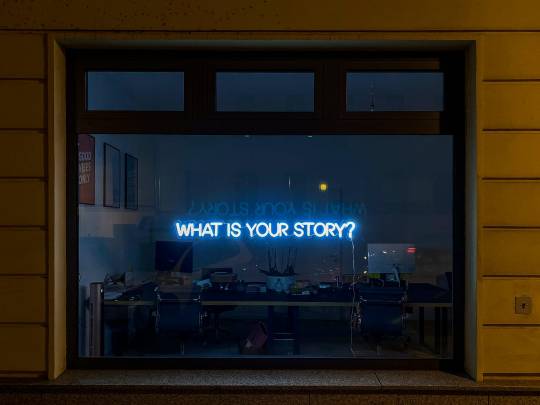
i. Use the Five Senses, and Immerse Yourself!
Imagine you’re the protagonist, standing in the scene that you have just created. Think of the setting. What are things about the space that you’d notice, if you were the one in your character’s shoes?
Smell? Hear? See? Touch? Taste?
Sight and sound are the senses that writers most often use, but don’t discount the importance of smell and taste! Smell is the most evocative sense, triggering memories and emotions the moment someone walks into the room and has registered what is going on inside—don’t take it for granted. And even if your character isn’t eating, there are some things that can be “tasted” in the air.
EXAMPLE:
TELLING: She walked into the room and felt disgusted. It smelled, and it was dirty and slightly creepy. She wished she could leave. SHOWING: She shuffled into the room, wrinkling her nose as she stepped over a suspicious stain on the carpet. The blankets on the bed were moth-bitten and yellowed, and the flowery wallpaper had peeled in places to reveal a layer of blood-red paint beneath…like torn cuticles. The stench of cigarettes and mildew permeated the air. “How long are we staying here again?” she asked, flinching as the door squealed shut.
The “showing” excerpt gives more of an idea about how the room looks, and how the protagonist perceives it. However, something briefer may be more suited for writers who are not looking to break the momentum in their story. (I.e. if the character was CHASED into this room and doesn’t have time to take in the details.)
ii. Study Movies and TV Shows: Think like a Storyteller, Not Just a Writer
Movies and TV shows quite literally HAVE TO "show, and not tell." This is because there is often no inner monologue or narrator telling the viewers what's happening. As a filmmaker, you need to use your limited time wisely, and make sure that the audience is engaged.
Think about how boring it would be if a movie consisted solely of a character monologuing about what they think and feel, rather than having the actor ACT what they feel.
(Tangent, but there’s also been controversy that this exposition/“telling” mindset in current screenwriting marks a downfall of media literacy. Examples include the new Percy Jackson and Avatar: The Last Airbender remakes that have been criticized for info-dumping dialogue instead of “showing.”)
If you find it easy to envision things in your head, imagine how your scene would look in a movie. What is the lighting like? What are the subtle expressions flitting across the actors' faces, letting you know just how they're feeling? Is there any droning background noise that sets the tone-- like traffic outside, rain, or an air conditioner?
How do the actors convey things that can't be experienced through a screen, like smell and taste?
Write exactly what you see in your mind's eye, instead of explaining it with a degree of separation to your readers.
iii. Listen to Music
I find that because music evokes emotion, it helps you write with more passion—feelings instead of facts! It’s also slightly distracting, so if you’re writing while caught up in the music, it might free you from the rigid boundaries you’ve put in place for yourself.
Here’s a link to my master list of instrumental writing playlists!
iv. Practice, Practice, Practice! And Take Inspiration from Others!
“Show Don’t Tell” is the core of an immersive scene, and requires tons of writing skills cultivated through repeated exposure. Like I said before, more experienced writers instinctively switch between showing and telling as they write— but it’s a muscle that needs to be constantly exercised!
If I haven’t written in a while and need to get back into the flow of things, I take a look at a writing prompt, and try cultivating a scene that is as immersive as possible! Working on your “Show, Don’t Tell” skills by practicing writing short, fun one-shots can be much less restrictive than a lengthier work.
In addition, get some inspiration and study from reading the works of others, whether it be a fanfiction or published novel!
If you need some extra help, feel free to check out my Master List of Writing Tips and Advice, which features links to all of my best posts, each of them categorized !
Hope this helped, and happy writing!
3K notes
·
View notes
Text
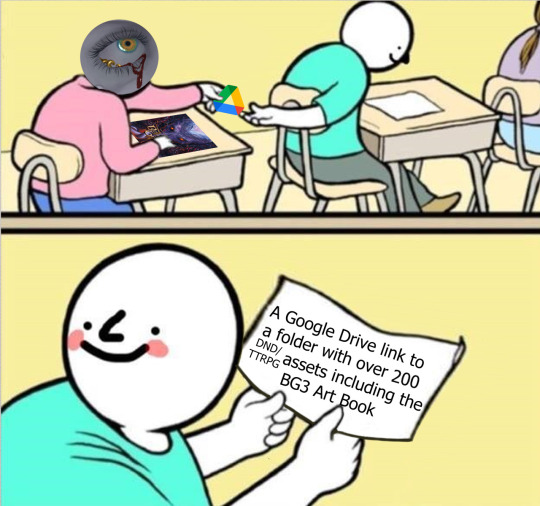
I might've added the BG3 Art Book to my dnd assets stash
It' 100% does not have things like the 5e players' handbook + 5e’s character sheet, several gm guides, critical role's explorer's guide to wildmount, baldur's gate and waterdeep city encounters, 101 potions and their effects, volo's guide to monsters, both of xanathar's guides, a bunch of other encounters, one shots, and class builds
In no way are there any pdf’s relating to any wizard who may or may not be residing on any coast
90K notes
·
View notes
Text
Just a bunch of Useful websites - Updated for 2023
Removed/checked all links to make sure everything is working (03/03/23). Hope they help!
Sejda - Free online PDF editor.
Supercook - Have ingredients but no idea what to make? Put them in here and it'll give you recipe ideas.
Still Tasty - Trying the above but unsure about whether that sauce in the fridge is still edible? Check here first.
Archive.ph - Paywall bypass. Like 12ft below but appears to work far better and across more sites in my testing. I'd recommend trying this one first as I had more success with it.
12ft – Hate paywalls? Try this site out.
Where Is This - Want to know where a picture was taken, this site can help.
TOS/DR - Terms of service, didn't read. Gives you a summary of terms of service plus gives each site a privacy rating.
OneLook - Reverse dictionary for when you know the description of the word but can't for the life of you remember the actual word.
My Abandonware - Brilliant site for free, legal games. Has games from 1978 up to present day across pc and console. You'll be surprised by some of the games on there, some absolute gems.
Project Gutenberg – Always ends up on these type of lists and for very good reason. All works that are copyright free in one place.
Ninite – New PC? Install all of your programs in one go with no bloat or unnecessary crap.
PatchMyPC - Alternative to ninite with over 300 app options to keep upto date. Free for home users.
Unchecky – Tired of software trying to install additional unwanted programs? This will stop it completely by unchecking the necessary boxes when you install.
Sci-Hub – Research papers galore! Check here before shelling out money. And if it’s not here, try the next link in our list.
LibGen – Lots of free PDFs relate primarily to the sciences.
Zotero – A free and easy to use program to collect, organize, cite and share research.
Car Complaints – Buying a used car? Check out what other owners of the same model have to say about it first.
CamelCamelCamel – Check the historical prices of items on Amazon and set alerts for when prices drop.
Have I Been Pawned – Still the king when it comes to checking if your online accounts have been released in a data breach. Also able to sign up for email alerts if you’ve ever a victim of a breach.
I Have No TV - A collection of documentaries for you to while away the time. Completely free.
Radio Garden – Think Google Earth but wherever you zoom, you get the radio station of that place.
Just The Recipe – Paste in the url and get just the recipe as a result. No life story or adverts.
Tineye – An Amazing reverse image search tool.
My 90s TV – Simulates 90’s TV using YouTube videos. Also has My80sTV, My70sTV, My60sTV and for the younger ones out there, My00sTV. Lose yourself in nostalgia.
Foto Forensics – Free image analysis tools.
Old Games Download – A repository of games from the 90’s and early 2000’s. Get your fix of nostalgia here.
Online OCR – Convert pictures of text into actual text and output it in the format you need.
Remove Background – An amazingly quick and accurate way to remove backgrounds from your pictures.
Twoseven – Allows you to sync videos from providers such as Netflix, Youtube, Disney+ etc and watch them with your friends. Ad free and also has the ability to do real time video and text chat.
Terms of Service, Didn’t Read – Get a quick summary of Terms of service plus a privacy rating.
Coolors – Struggling to get a good combination of colors? This site will generate color palettes for you.
This To That – Need to glue two things together? This’ll help.
Photopea – A free online alternative to Adobe Photoshop. Does everything in your browser.
BitWarden – Free open source password manager.
Just Beam It - Peer to peer file transfer. Drop the file in on one end, click create link and send to whoever. Leave your pc on that page while they download. Because of how it works there are no file limits. It's genuinely amazing. Best file transfer system I have ever used.
Atlas Obscura – Travelling to a new place? Find out the hidden treasures you should go to with Atlas Obscura.
ID Ransomware – Ever get ransomware on your computer? Use this to see if the virus infecting your pc has been cracked yet or not. Potentially saving you money. You can also sign up for email notifications if your particular problem hasn’t been cracked yet.
Way Back Machine – The Internet Archive is a non-profit library of millions of free books, movies, software, music, websites and loads more.
Rome2Rio – Directions from anywhere to anywhere by bus, train, plane, car and ferry.
Splitter – Seperate different audio tracks audio. Allowing you to split out music from the words for example.
myNoise – Gives you beautiful noises to match your mood. Increase your productivity, calm down and need help sleeping? All here for you.
DeepL – Best language translation tool on the web.
Forvo – Alternatively, if you need to hear a local speaking a word, this is the site for you.
For even more useful sites, there is an expanded list that can be found here.
81K notes
·
View notes
Text

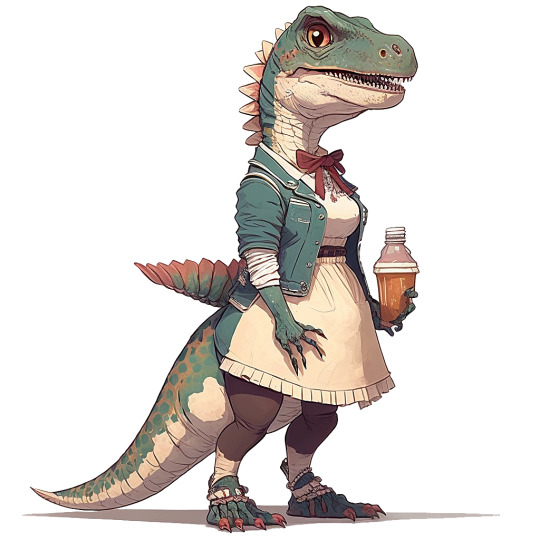
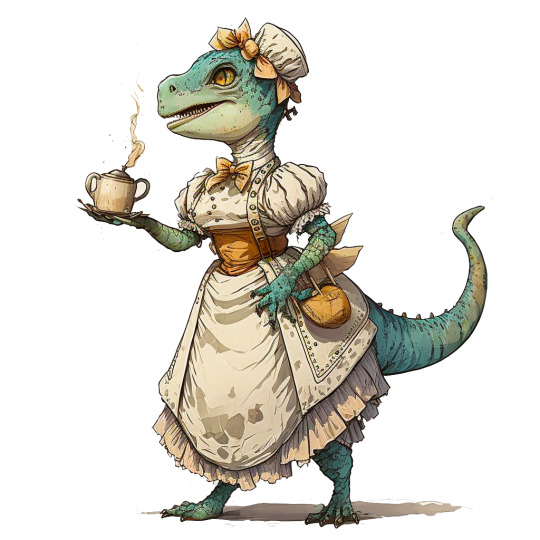
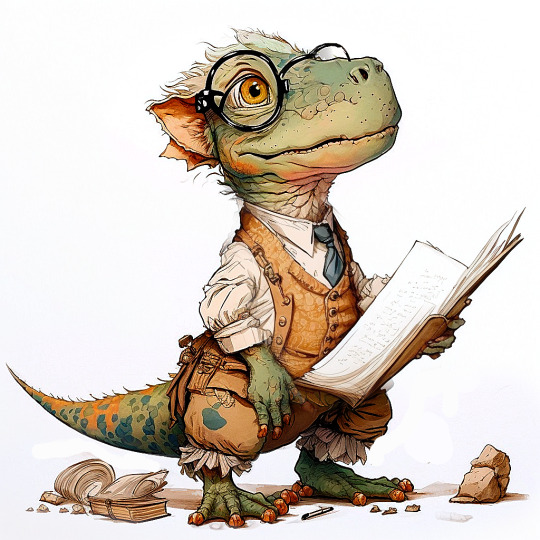
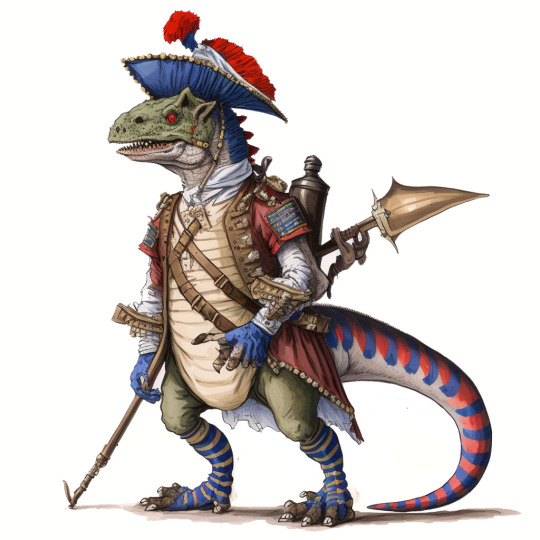
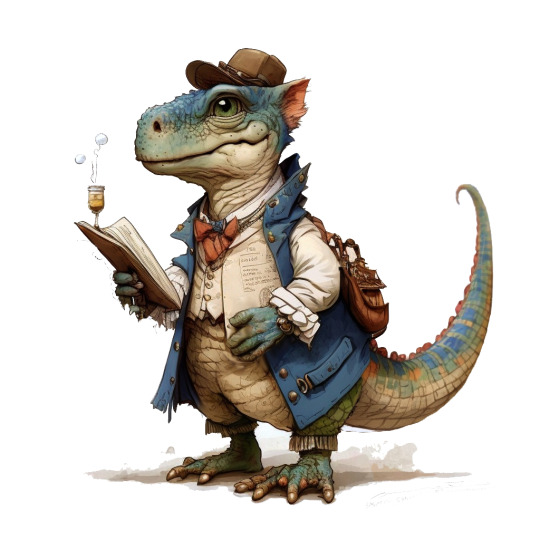

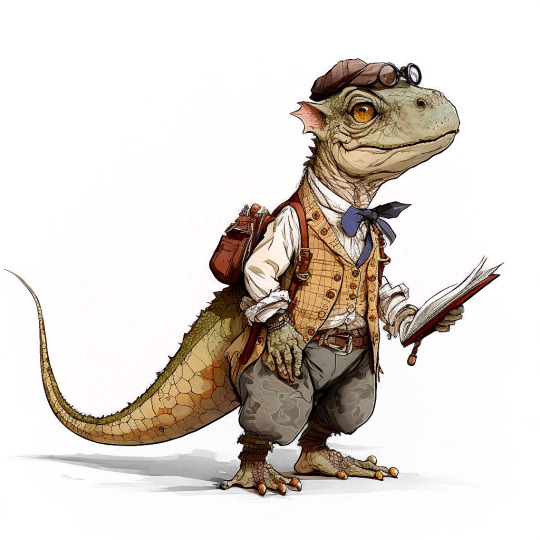
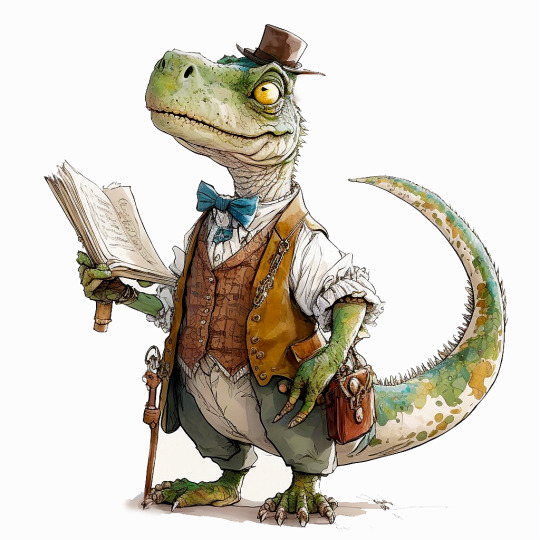
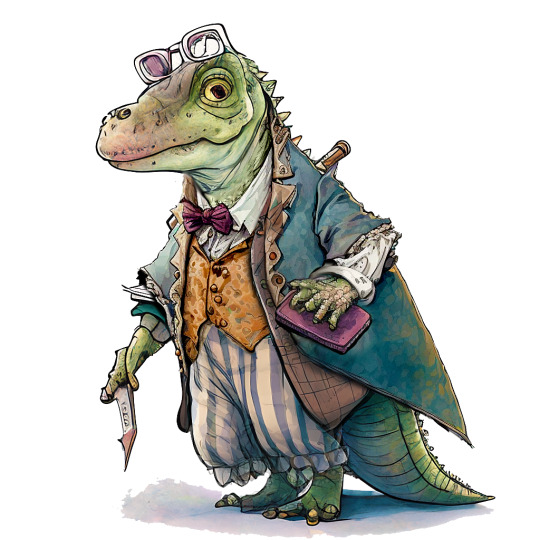
DinoFolk Character Tokens, Part 4 (pt 1, pt 2, pt 3)
the last 10 Dinosaur-Folk tokens I made for the D&D game I’m playing in, to fill out the world that Albert Sauros, Noted Spiritualist, comes from. In this case a world of Victorian Dinosaurs, this set being mostly maid staff and professors from the University. This set of character tokens was made with Midjourney v4.
In your game/head, they can be any fancy reptile-humanoids you like! Use them for character portraits, game tokens, inspiration for a new PC (or OC) or tag yourself, as you like.
While these are all modified with cleanup and compositing, these are all free to use for anyone who wants to, thus I have not signed these pieces to make things easier.
You can download all 40 here.
Prompt format:
a <either dinosaur or specific species>-anthro <profession>, 18th century clothing (or other descriptor), character design, white background, fantasy character art, colored line art, in the style of 1st edition D&D, <artist/style references>
For style references I wound up mostly with a Tony Diterlizzi/Norman Rockwell mashup.
715 notes
·
View notes
Text
Making a shitty one-page RPG called Oh Shit It’s the Killer. The premise is simple: you’re a high schooler spending the weekend in the woods with your besties. The Killer is there also. He is trying to the Kill you
86K notes
·
View notes
Text
So my problem with most ‘get to know your character’ questioneers is that they’re full of questions that just aren’t that important (what color eyes do they have) too hard to answer right away (what is their greatest fear) or are just impossible to answer (what is their favorite movie.) Like no one has one single favorite movie. And even if they do the answer changes.
If I’m doing this exercise, I want 7-10 questions to get the character feeling real in my head. So I thought I’d share the ones that get me (and my students) good results:
What is the character’s go-to drink order? (this one gets into how do they like to be publicly perceived, because there is always some level of theatricality to ordering drinks at a bar/resturant)
What is their grooming routine? (how do they treat themselves in private)
What was their most expensive purchase/where does their disposable income go? (Gets you thinking about socio-economic class, values, and how they spend their leisure time)
Do they have any scars or tattoos? (good way to get into literal backstory)
What was the last time they cried, and under what circumstances? (Good way to get some *emotional* backstory in.)
Are they an oldest, middle, youngest or only child? (This one might be a me thing, because I LOVE writing/reading about family dynamics, but knowing what kinds of things were ‘normal’ for them growing up is important.)
Describe the shoes they’re wearing. (This is a big catch all, gets into money, taste, practicality, level of wear, level of repair, literally what kind of shoes they require to live their life.)
Describe the place where they sleep. (ie what does their safe space look like. How much (or how little) care / decoration / personal touch goes into it.)
What is their favorite holiday? (How do they relate to their culture/outside world. Also fun is least favorite holiday.)
What objects do they always carry around with them? (What do they need for their normal, day-to-day routine? What does ‘normal’ even look like for them.)
58K notes
·
View notes
Text
How do you write healthy parent-child relationships?
120K notes
·
View notes
Text
I found a new way to generate landmasses for your dnd games and trpgs or whatever else, fantasy series, etc.
Now you may be familiar with the bean or d20 method, and its a nice method, but I find it sometimes can be odd with its landmassed and the beans can scatter too randomly.
So I present you the tangerine method:
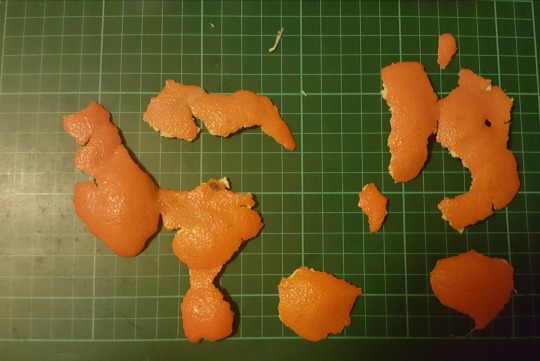
Peel a tangerine then use the pieces how they peel off and arrange them into landmasses of your choosing as above and voila here's your new campaign world.
Bonus you get to eat tasty tangerine foing it too.
57K notes
·
View notes
Text
My wife's goblin artificer, Krank!

3 notes
·
View notes
Text
So, let's go over everything Wizards of the Coast is trying to do this coming year.
>Erasing everything that made DnD fun
>Sanitizing everything to appease a minority of leftist puritans
>Making anyone who wants to play DnD pay microtransactions
>Making anyone who makes anything based off of DnD pay royalties to Wizards of the Coast
I hope the company fucking crashes and burns, Hasbro failed to claim TSR as their own now we just need it all to crash and burn so TSR can make a big comeback.
10K notes
·
View notes
Text
Here is a free pdf of the players handbook
Here is a free pdf of xanathars guide to everything
Here is a free pdf to monsters manual
Here is a free pdf to tashas cauldron of everything
Here is a free pdf to dungeon master’s guide
Here is a free pdf to volo’s guide to monsters
Here is a free pdf of mordenkainen’s tomb of foes
For all your dnd purposes
236K notes
·
View notes

